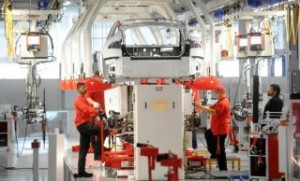NLRB investigating Tesla factory conditions: The National Labor Relations Board has filed a complaint and opened an investigation into worker safety conditions at Tesla’s Fremont, Calif., plant. The investigation comes from complaints filed by Tesla factory employees and the United Auto 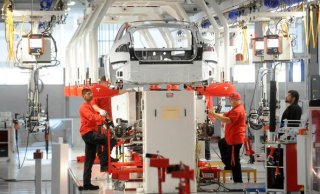 Workers union with charges of unfair labor practices. The Fremont factory has been picking up production volume as the Tesla Model 3 is being delivered to first buyers, and with production volumes speeding up later this year. Tesla sees it as a campaign by UAW to unionize Tesla workers, which has failed to gain enough support so far to win a union election. Employees have voiced their own concerns about working conditions in the factory. A study released by Worksafe in May found injuries at the Fremont plant to be much higher than the industry average in recent years.
Workers union with charges of unfair labor practices. The Fremont factory has been picking up production volume as the Tesla Model 3 is being delivered to first buyers, and with production volumes speeding up later this year. Tesla sees it as a campaign by UAW to unionize Tesla workers, which has failed to gain enough support so far to win a union election. Employees have voiced their own concerns about working conditions in the factory. A study released by Worksafe in May found injuries at the Fremont plant to be much higher than the industry average in recent years.
Groups asking feds to retain fuel economy rules: Several groups have asked to be heard when the U.S. Environmental Protection Agency holds a Washington D.C. public hearing on Sept. 6. That hearing will explore possible changes to phase two of the fuel economy and emissions rules. Several groups have filed opinions opposing the Trump administration rolling back on the 2022-2025 standards adopted in the last days of the Obama administration. These groups include the Union of Concerned Scientists, Environmental Defense Fund, Sierra Club, International Council on Clean Transport, American Council for an Energy-Efficient Economy (ACEEE), American Lung Association, Consumers Union, Consumer Federation of America, and BlueGreen Alliance. They’d like to see it stay in place over concerns for the environment, health, consumer and business interests, oil imports, and national security.
Nissan Leaf sales doing well: Nissan reports that sales of its all-electric Leaf have been doing 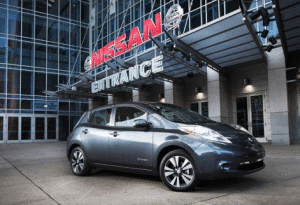 well lately, with an 8.3% increase over July. At 9,685 units sold in the U.S. so far in 2017, it’s up 22.3% over that same period last year. There’s been a lot of interest in the Leaf lately with the all-new version being launched in September. It will be longer range than the current Leaf and will feature a new set of tech features, including ePedal. Consumers are looking for more affordable electric cars and have a lot of interest in the new Leaf, along with the Tesla Model 3 and Chevy Bolt.
well lately, with an 8.3% increase over July. At 9,685 units sold in the U.S. so far in 2017, it’s up 22.3% over that same period last year. There’s been a lot of interest in the Leaf lately with the all-new version being launched in September. It will be longer range than the current Leaf and will feature a new set of tech features, including ePedal. Consumers are looking for more affordable electric cars and have a lot of interest in the new Leaf, along with the Tesla Model 3 and Chevy Bolt.

 easy to navigate and mobile device responsive. You can also view listings for upcoming clean transportation webinars in the Upcoming Events area. “Electrifying Your Fleet: How the latest technologies can significantly reduce the infrastructure and operating costs of driving on electricity,” will take place on August 16 and will be presented by charging infrastructure supplier ChargePoint. “Case Studies of Green Fleet Activities in Canada” will take place on October 18 and will be presented by Fleet Challenge.
easy to navigate and mobile device responsive. You can also view listings for upcoming clean transportation webinars in the Upcoming Events area. “Electrifying Your Fleet: How the latest technologies can significantly reduce the infrastructure and operating costs of driving on electricity,” will take place on August 16 and will be presented by charging infrastructure supplier ChargePoint. “Case Studies of Green Fleet Activities in Canada” will take place on October 18 and will be presented by Fleet Challenge.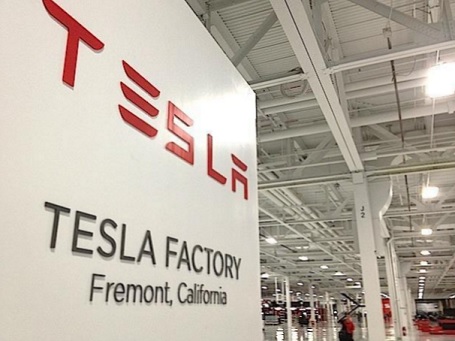 during yesterday’s annual shareholder meeting. The company may need to build at least three and
during yesterday’s annual shareholder meeting. The company may need to build at least three and 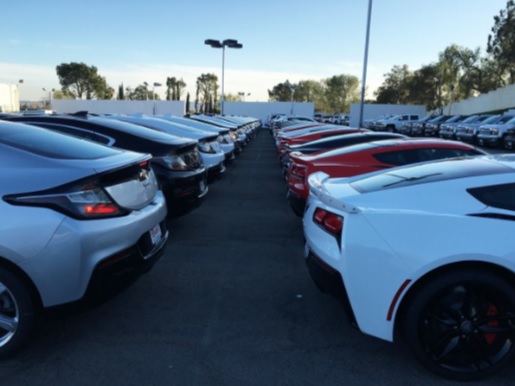 was next to zero just five years earlier; however it’s still just 0.2% of light-duty vehicles, according to the report. Last year saw a surge in sales – 60% more than in 2015, with much of that taking place in China. “China was by far the largest electric car market, accounting for more than 40% of the electric cars sold in the world and more than double the amount sold in the United States,” the IEA wrote in the report. “It is undeniable that the current electric car market uptake is largely influenced by the policy environment.”
was next to zero just five years earlier; however it’s still just 0.2% of light-duty vehicles, according to the report. Last year saw a surge in sales – 60% more than in 2015, with much of that taking place in China. “China was by far the largest electric car market, accounting for more than 40% of the electric cars sold in the world and more than double the amount sold in the United States,” the IEA wrote in the report. “It is undeniable that the current electric car market uptake is largely influenced by the policy environment.”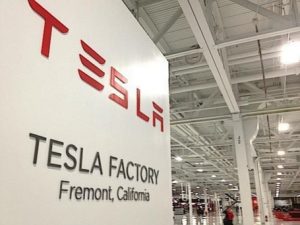 Tesla taking heat over immigrant worker and supplier relations: Tesla Motors has been facing challenges lately on the vehicle manufacturing front; one of these controversies comes from
Tesla taking heat over immigrant worker and supplier relations: Tesla Motors has been facing challenges lately on the vehicle manufacturing front; one of these controversies comes from 
